Coastal Giant Salamander
- March 19, 2024
- 0 comment
The Coastal Giant Salamander (Dicamptodon tenebrosus) is a remarkable amphibian species found primarily along the western coast of North America. This species stands out for its impressive size, unique habitat preferences, and fascinating behavior. This article delves into the various aspects of the Coastal Giant Salamander, aiming to provide a comprehensive overview of its biology, ecology, and conservation status.
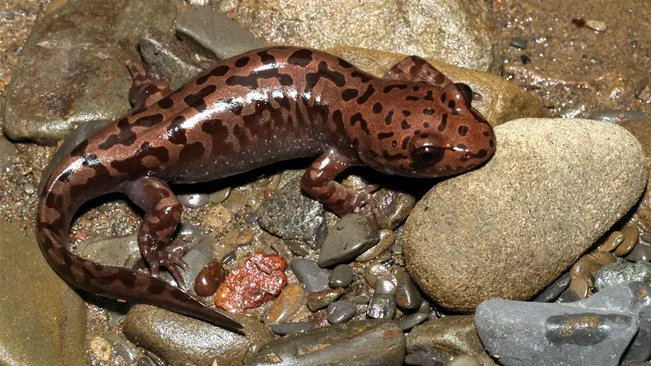
| Category | Details |
|---|---|
| Scientific Name | Dicamptodon tenebrosus |
| Common Names | Coastal Giant Salamander |
| Classification | Kingdom: Animalia, Phylum: Chordata, Class: Amphibia, Order: Urodela, Family: Ambystomatidae |
| Size | Up to 13 inches (33 cm) in length |
| Weight | Varies with size, generally more substantial than most other salamander species due to their large size |
| Lifespan | Can live for several years, exact lifespan varies but is generally less studied |
| Habitat | Moist, temperate forests near streams or other bodies of water in the Pacific Northwest of the United States and parts of Canada |
| Distribution | From northern California to British Columbia |
| Diet | Carnivorous, feeding on insects, small mammals, other amphibians, and crustaceans |
| Behavior | Primarily nocturnal and elusive. Adults are terrestrial but stay close to water sources. Larvae are fully aquatic. |
| Reproduction | Aquatic reproduction with females laying eggs in hidden locations under rocks in streambeds. Eggs are guarded until they hatch into aquatic larvae, which eventually metamorphose into terrestrial adults. |
| Conservation Status | Least Concern, but facing threats from habitat destruction, pollution, and climate change |
| Conservation Efforts | Protecting habitats, especially aquatic environments for larval development and breeding. Ongoing research into their ecology and biology to inform conservation strategies. |
| Cultural Significance | Holds ecological significance in its native habitat and serves as an interest for scientific study due to its size and unique life cycle. Its conservation status emphasizes the need for environmental awareness and action. |
| Challenges | Main challenges include habitat destruction, pollution, and the effects of climate change. Conservation efforts are focused on habitat protection, pollution control, and research to ensure their survival and understand their ecology better. |
Taxonomy and Physical Description
Belonging to the family Ambystomatidae, the Coastal Giant Salamander is one of the largest terrestrial salamanders in the world. Adults can reach lengths of up to 13 inches (33 cm), although the average size is generally smaller. They have robust bodies with well-developed limbs and broad heads. Their skin color varies from brown to gray, often speckled or mottled with darker patches, which helps them blend into their forest floor habitat.
Coloration
The dorsal side varies from brown to gray, often adorned with darker speckles or mottles that serve as camouflage among the forest floor debris. This coloration pattern provides an essential survival mechanism against predation by blending into the natural environment.

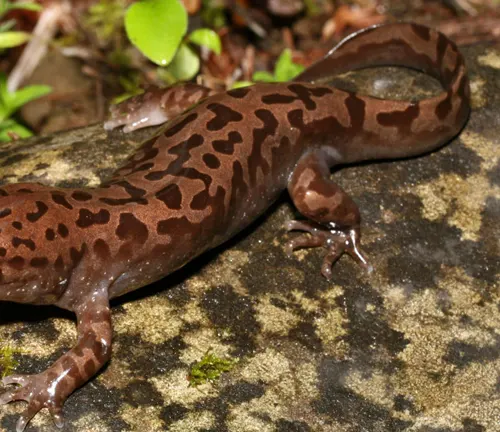
Body Shape
The body is robust and muscular, designed for strength and agility, with well-developed limbs that enable it to navigate through both aquatic and terrestrial environments efficiently.
Eyes
They have large, prominent eyes that enhance their vision in low-light conditions, enabling them to spot prey and predators alike during their nocturnal activities.


Limbs
The limbs are proportionally large with strong, webbed feet that aid in swimming and provide agility and speed on land. Each foot ends in four to five toes, which are critical for their locomotion in different terrains.
Tail
The tail is another distinctive feature, being long, muscular, and laterally compressed, which acts like a rudder during swimming. The tail also serves as a fat storage organ, vital for energy reserves.
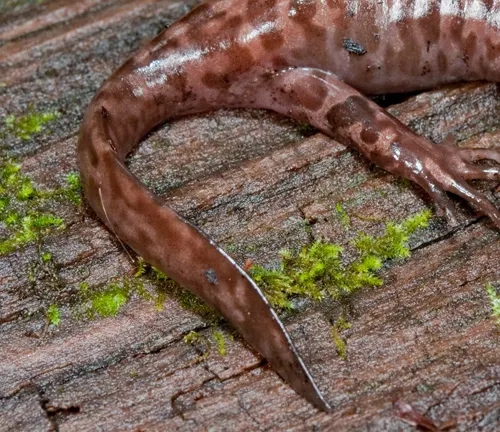
Habitat and Distribution
The Coastal Giant Salamander, native to the verdant expanses of the Pacific Northwest, from northern California through to British Columbia, finds its home within the dense, moisture-laden temperate forests characteristic of this region. This amphibian’s existence is closely intertwined with the presence of water; its early life stages are spent in the clear, cool, and swift currents of streams where the fully aquatic larvae depend on the dynamic aquatic ecosystem for their development.

As they transition into adulthood, these salamanders venture onto land, yet they never stray far from the life-giving waters of their birth. The moist environment of the forest floor provides the necessary hydration for their skin, while nearby streams and water bodies serve as crucial refuges and hunting grounds. This duality of habitat — aquatic for the young, with a gradual shift to a more terrestrial life for adults, yet always bound to the presence of water — underscores the Coastal Giant Salamander’s unique adaptation to its environment, reflecting the delicate balance of ecological needs across the stages of its life cycle.
Diet and Predation
The diet of the Coastal Giant Salamander is as varied as it is voracious. It preys on a wide range of organisms, including insects, small mammals, other amphibians, and crustaceans. Their hunting strategy is primarily sit-and-wait, relying on their camouflage to ambush unsuspecting prey.

Predators of the Coastal Giant Salamander include snakes, birds of prey, and mammals such as raccoons and otters. Their cryptic coloration and nocturnal habits help reduce the risk of predation.
Behavior and Reproduction
The Coastal Giant Salamander is known for its elusive nature, spending much of its time hidden under rocks, logs, or leaf litter. They are primarily nocturnal, becoming active at night to hunt or during rainy periods.
Reproduction occurs in aquatic environments, where females lay eggs in hidden locations such as under rocks in streambeds. The eggs are guarded by the female until they hatch into fully aquatic larvae, which can take several months to a few years to metamorphose into terrestrial adults, depending on environmental conditions.
Nocturnal Activity
Coastal Giant Salamanders are primarily active at night. Their nocturnal habits help them avoid predators and hunt for prey under the cover of darkness.
Elusive Nature
They are known for their secretive behavior, often hiding under rocks, logs, or leaf litter during the day. This elusiveness makes them difficult to spot in the wild.
Territoriality
While not overly aggressive, Coastal Giant Salamanders can be territorial, especially males during the breeding season. They may exhibit aggressive postures or vocalizations when threatened or during male-to-male encounters.
Vocalizations
Uniquely among salamanders, they are capable of making noises. When threatened, they can produce a barking or growling sound as a defense mechanism to startle predators or competitors.
Predatory Behavior
They are ambush predators, lying in wait for prey to come within reach. Their diet is varied, including insects, small mammals, and other amphibians, which they catch with their quick and effective hunting strategy.
Aquatic to Terrestrial Transition
Larvae are fully aquatic and breathe through external gills. As they mature, they undergo a partial metamorphosis where they lose their gills and become more terrestrial, though they remain closely tied to aquatic environments.
Breeding Behavior
Breeding takes place in water, where females lay eggs in secure, hidden locations. Females may exhibit parental care by guarding the eggs until they hatch, which is relatively rare among amphibians.
Adaptability
Coastal Giant Salamanders demonstrate a remarkable ability to adapt to varying environmental conditions, moving between aquatic and terrestrial habitats as needed for survival.
Social Interaction
Outside of the breeding season, Coastal Giant Salamanders are generally solitary. However, during breeding, they may gather in significant numbers in suitable aquatic habitats.
Environmental Sensitivity
They are highly sensitive to changes in their environment, especially regarding water quality and habitat disturbance. This sensitivity affects their behavior, such as breeding and hunting practices.
Conservation Status
The Coastal Giant Salamander is considered to be of “Least Concern” by the IUCN Red List, but its populations are facing increasing threats. Habitat destruction, pollution, and climate change are significant concerns. Logging and urban development can degrade or eliminate suitable habitats, while pollution from agricultural runoff and industrial activities can contaminate waterways critical for their survival.
Conservation efforts for the Coastal Giant Salamander involve protecting its habitat, especially the aquatic environments necessary for larval development and breeding. Research into its ecology and biology is essential to inform conservation strategies and ensure the species’ long-term survival.
General Care
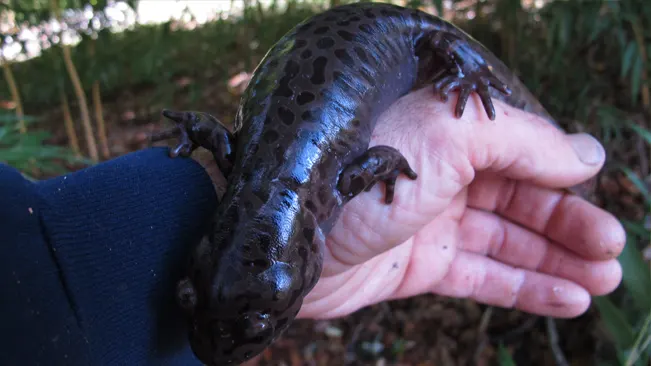
- Handling Minimal handling is recommended to avoid stress and potential harm to their delicate skin. If handling is necessary, ensure hands are clean and wet to minimize discomfort and the risk of transferring skin oils or contaminants to the salamander. Gentle and secure support should be provided, avoiding tight grips.
- Health Monitoring Vigilant observation for signs of illness or distress is crucial. Symptoms to watch for include changes in eating habits, lethargy, unusual skin discoloration, lesions, or abnormal shedding. Behavioral changes, such as increased aggression or hiding more than usual, can also indicate stress or illness. Regular health checks should include examining their skin for cuts or abrasions, monitoring their weight, and observing their activity levels. Consultation with a veterinarian experienced in amphibian care is essential at the first sign of health issues.
- Cleanliness Maintain cleanliness in the enclosure to prevent the buildup of harmful bacteria or fungi. Regular cleaning of the land area and water changes are necessary. Any feces or uneaten food should be removed promptly to maintain a healthy environment.
- Water Quality The quality of the water in the enclosure is critical for the health of Coastal Giant Salamanders, especially for those that spend a significant amount of time in the water. Regularly test the water for pH, ammonia, nitrites, and nitrates to ensure it remains within safe parameters. The use of a good filtration system will help maintain clean and oxygen-rich water.
Different Species of Coastal Giant Salamander
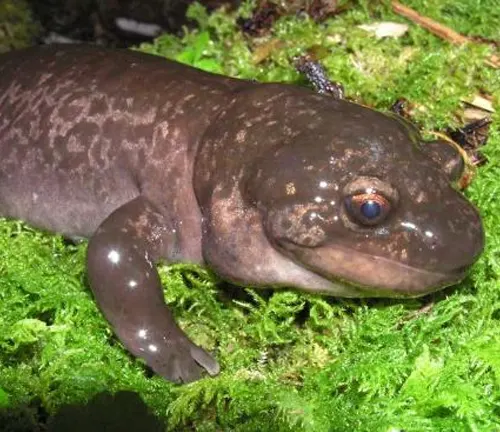
Dicamptodon aterrimus
Idaho Giant Salamander: This species is native to Idaho and parts of Montana, Washington, and British Columbia. It shares similar habitats with D. tenebrosus but is geographically isolated from them.
Dicamptodon copei
Cope’s Giant Salamander: Endemic to a small region in the Pacific Northwest, particularly in Washington state. This species is less studied and is known for its aquatic lifestyle, with some populations never undergoing complete metamorphosis to become terrestrial.

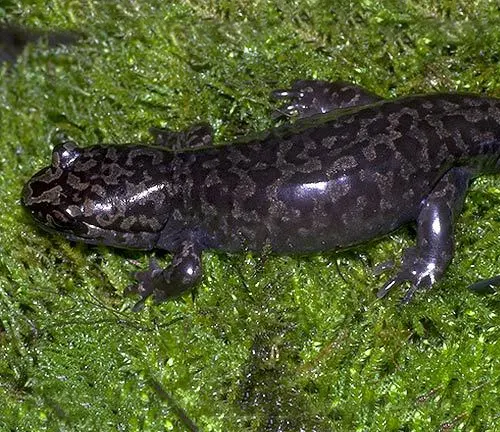
Dicamptodon ensatus
California Giant Salamander: As the name suggests, this species is primarily found in California, inhabiting similar environments to its relatives. It is known for its large size and the ability to produce vocal sounds, a rare trait among salamanders.
Conclusion
The Coastal Giant Salamander is a fascinating species that plays a crucial role in the ecosystems of the Pacific Northwest. Its unique characteristics and ecological significance underscore the importance of conserving its habitats and addressing the environmental challenges it faces. Through continued research and conservation efforts, we can ensure that future generations will continue to marvel at this impressive amphibian.
Frequently Asked Questions (FAQs)
- What size tank do I need for a Coastal Giant Salamander?
For a single adult Coastal Giant Salamander, a minimum of a 40-gallon tank is recommended to provide sufficient space for both aquatic and terrestrial areas within the enclosure. - How often should I feed my Coastal Giant Salamander?
Adult Coastal Giant Salamanders should be fed 2-3 times a week. The frequency can vary depending on the salamander’s size, age, and activity level. Always adjust based on the individual’s health and weight. - What should I include in my Coastal Giant Salamander’s diet?
Their diet should consist of live prey, such as crickets, earthworms, and feeder fish. A varied diet helps ensure they receive all necessary nutrients. Occasionally, small pieces of fish or soft-bodied insects can be added for variety. - How can I maintain the right humidity and temperature in the enclosure?
Maintain a temperature range between 55°F to 65°F (13°C to 18°C) and high humidity levels (80-90%) through regular misting, a large water area, and possibly a humidifier. Use thermometers and hygrometers to monitor these conditions. - How often should I clean the tank?
Perform partial water changes weekly and a full clean of the tank at least once a month. Remove feces, uneaten food, and debris promptly to prevent the buildup of harmful bacteria. - Can I house multiple Coastal Giant Salamanders together?
While possible, it’s generally not recommended due to their solitary nature and potential for aggression. If you do, ensure the enclosure is large enough and has multiple hiding spots to reduce stress. - How do I handle a Coastal Giant Salamander safely?
Handling should be minimal to avoid stress. If necessary, ensure your hands are clean and moist to protect their delicate skin. Support their body gently, avoiding tight grips. - What are common signs of illness in Coastal Giant Salamanders?
Signs include lack of appetite, lethargy, skin lesions, and abnormal behavior. Consult an amphibian veterinarian if you notice any of these symptoms. - Do Coastal Giant Salamanders require UV lighting?
No, they do not require UV lighting. However, maintaining a natural light cycle of 12 hours light and 12 hours dark is beneficial. - How can I enrich my Coastal Giant Salamander’s environment?
Include a variety of rocks, driftwood, live plants, and hiding places to simulate their natural habitat and encourage natural behaviors like hunting and exploring.

Jack Williams
Forestry AuthorI'm Jack Williams, Jack Williams, my expertise in welding and generator technologies extends beyond traditional boundaries. With over 13 years of experience, I have honed my skills in a range of heavy-duty equipment, focusing particularly on welding and power generation. My passion for nature and commitment to ecological sustainability inform my approach to work. I emphasize safety, efficiency, and staying current with technological advancements. Beyond my technical skills, I am dedicated to sharing knowledge and fostering environmental awareness, aiming to contribute positively to both the welding and generator operation industries.

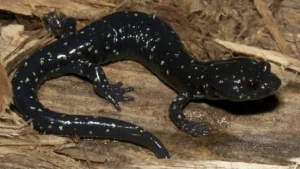

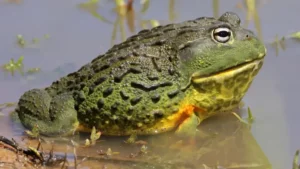


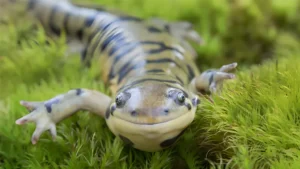

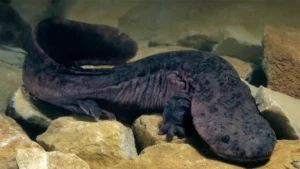
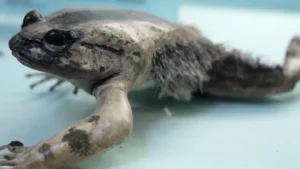
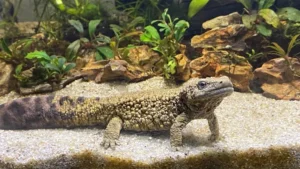
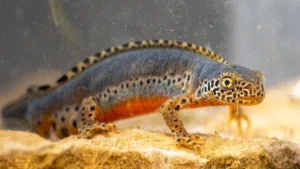
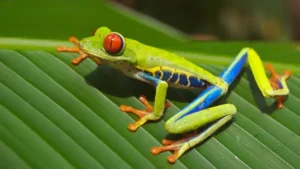
Leave your comment